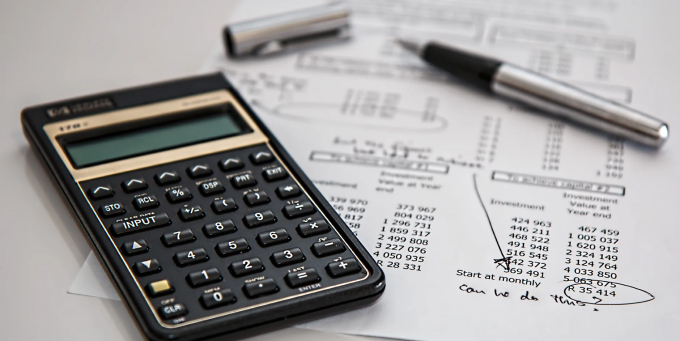How to Value Commercial Real Estate: The Definitive Guide for 2020


Prologue
Correctly valuing a piece of commercial real estate can be the difference between making a great deal and getting stuck with a bad investment. It’s arguably the most important part of the buying process, so you need to take the time to get it right.
Unfortunately, there isn’t one tried and true method for doing this. There are a number of ways to value commercial real estate and the method you choose will depend largely on the property you’re looking at.
Concepts to Know

Before we delve into the various methods used to calculate commercial real estate value, it’s important to cover some concepts that you’ll need to understand. Once you’re familiar with the terminology and what each of these terms mean you’ll be much more prepared to start the valuation process.
Cap Rate
The capitalization rate, or cap rate, is used to determine what the ROI in year one will be, assuming you purchase the property cash. It’s calculated by dividing the net operating income by the property’s value.
Keep in mind that the cap rate does not take into account leverage or the impact of potential property improvements. Because of this, other tools should be used in order to accurately value a property.
Gross Rent
This is the total amount of income received including base rent, as well as other types of income such as parking income, storage income, laundry income, etc. Essentially, this is the amount you would make if all of your units were rented for the entire year and every tenant paid you on time and in full.
Gross Rent Multiplier
The gross rent multiplier (GRM) is a tool investors can use to determine how long it will take for a property to pay for itself. It’s calculated by dividing the sales price of a property by the gross rent.
While this is a valuable tool for investors, it’s important to remember that this calculation doesn’t factor in any of the costs associated with the property.
Net Operating Income
The net operating income (NOI) lets you know how much income the property has generated after expenses. You can calculate this by subtracting the property’s operating expenses and vacancy from its gross rent.
Vacancy and Collection Loss
This refers to the rental income lost as a result of vacant units and uncollected rents.
Sales Comparison Approach

Now that you have a firm understanding of all the concepts used to calculate commercial real estate value, it’s time to review the various approaches you can take. The first one we’re going to look at is the sales comparison approach.
This is likely the simplest way to value a property and probably the method you’re most familiar with. With this approach, you look at the sales price of similar properties to determine the market value of a piece of real estate.
For example, if you’re looking at purchasing a 12 story office building in Seattle you may look to see if any other similar office buildings have sold in the city in the last year. You can then base your valuation on the price the other property sold for.
While in theory this is a great approach, it does have a number of drawbacks:
It’s Difficult to Find Comparable Properties: Unlike residential real estate, commercial properties often have a number of unique features that make it difficult to compare them to others
It Doesn’t Account for NOI: Just because a property is similar doesn’t mean it generates the same amount of income.
It Doesn’t Account for Vacancy and Collection Loss: Unless you have inside information you can’t tell if a comparable property had the same amount of vacancy as the piece of real estate you’re looking at.
If you can find a comparable property that recently sold in your area you should definitely factor that into your evaluation. However, because of the many weaknesses of this model, it’s a good idea to combine this method with other approaches to determine a more accurate evaluation.
Land Approach

In simplified terms, the cost approach values a property based on the cost to rebuild its structures, plus the value of the land itself.
When using the cost approach, it’s also a good idea to factor in accumulated depreciation as well, since in most cases the structure you’re looking at won’t be brand new. Considering this, you can determine a property’s value by using the following formula:
Value = Land Value + (Cost to Rebuild Structures - Accumulated Depreciation)
For example, say you’re looking at a piece of commercial property. You estimate that the land without any structures would be worth $100,000. You then estimate that the cost to rebuild the structures on the property would be $500,000. So, at this point you have a valuation of $600,000.
However, after calculating the accumulated depreciation you determine that the property’s assets have decreased in value by $50,000. This means your valuation is $550,000 (100,000 + (500,000 - 50,000))
There are a number of methods you can use to estimate the cost of rebuilding the property’s structures:
Comparative Unit Method: Estimates the average cost of the property per square foot, taking into account all building materials used. The cost is then multiplied by the total square footage of the property to reach a valuation.
Segregated Cost Method: Estimates the total cost of all the necessary construction assemblies and systems. For example, when using this method you would calculate the cost of the plumbing system, flooring, roof, etc., then add them all up to determine a valuation
Unit-in-Place Method: Estimates the cost of each individual building component. So, for example, instead of looking at the plumbing system as a whole, you would look at the cost of each individual component (pipes, fittings, etc.).
Quantity Survey Method: Takes the unit-in-place method to the next level by estimating exactly what building materials will be needed, and the total quantity of each material necessary to replicate the structure.
The cost approach is best used when you are unable to locate any comparable properties in the area that have sold recently, or if the property has unique features that make it difficult to compare it to other pieces of real estate.
Income Capitalization Approach

This is the most widely used approach and involves placing a value on the property based on the potential income you can expect to generate from it.
In order to do this, you’ll need to calculate the NOI (gross rent minus expenses and vacancy). You should also look at the market income (also known as the proforma income) to determine what similar properties are earning. This should give you a clear picture of what type of revenue the property is currently generating, as well as what it could potentially generate.
While this approach can be a powerful valuation method, it’s largely dependent on your ability to accurately estimate the potential income of a property. If you overlook a key detail you could over-value a piece of real estate and end up paying more than you should.
When calculating income, make sure to consider the following:
The Income of Similar Properties: See if you can gain access to the income of similar properties in your area. If you find their income is higher or lower than the property you’re looking at, find out why.
Vacancy and Collection Loss: How much money did the property lose due to vacancy and unpaid rent? Do you have a plan to fix this?
Repair and Maintenance Costs: Are there any upcoming repair and maintenance costs that will impact your bottom line?
Rent Increases: Complete a market survey to determine what the market rent is for similar properties in the area. If it’s higher than what the property is currently charging then you may be able to increase rents to boost your income.
When it comes to how to value commercial real estate, this is one of the best approaches. Just make sure you have access to accurate financial information and are confident in your ability to estimate the income of the property. It may be a good idea to hire an expert to calculate the NOI and the market income to ensure your figures are correct.
Consider Consulting With Experts to Assist Your Valuation
There are a lot of factors that go into making a good real estate investment. Because of this, it’s a smart idea to surround yourself with experienced industry experts who can advise you.
A good commercial real estate broker is the best place to start. Not only will they be able to show you properties that meet your criteria, but they’ll also have a good idea of how much each property is worth based on current market data and trends.
In addition to these valuable insights, they’ll have a number of industry contacts including property inspectors and appraisers who can give you the information you need to come up with an accurate property valuation.

Thank You!
We will contact you as soon as possible.
Be the First One to Know about the
Off-Market Opportunities
Sign up to receive real estate insights and tips direct to your inbox and get exclusive access to investment opportunities.